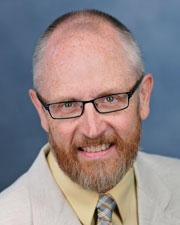Researchers design system to improve reporting, service at youth psych centers
LAWRENCE — Researchers at the University of Kansas have developed a performance information system for youth residential psychiatric service centers throughout the state and have found the new method of keeping track of information can help inform practice by giving the service providers information about their own programs. the ability to compare to other programs and help kids.
Steve Kapp, professor of social welfare, and Sur Ah Hahn, April Rand and Jeri Damman, doctoral students at KU, developed the web-based Kansas Result Oriented Management System for psychiatric residential treatment facilities for children and youth. The Kansas Department for Aging and Disability Services funded the work.
Seventeen residential services across the state for youths experiencing severe mental health issues, helped inform the development of the new system. Hahn met with directors of the facilities to learn about their progress models, what measures worked and areas that were lacking.
"We used that information to build a meta model, the basis for where we needed more information and improvement," Kapp said.
The researchers created a set of measures including how long young people stay in the facilities, where they go when they leave, their involvement in the community and family involvement in the program. Naturally, there is a goal to reduce the amount of time kids spend in the psychiatric facilities and limit the time they are separated from their families and communities as well as ensuring they make clinical progress while in the facility.
The team also recommended use of The Ohio Scales, a clinical instrument for measuring outcomes for youths and their families served by the facilities. The scales involve the youths, parents and workers involved in a stay at one of the facilities. When a youth is admitted and at their discharge, all three will fill out forms that gather information on his or her functioning, severity of problem, hopefulness and satisfaction.
After a six-month pilot study with eight facilities, the system went live at all 17 facilities. They can now enter data and generate reports on each youth, their individual facility and how they compare to averages from facilities across the state.
"One of the things we found in the facilities, is that kids with high levels of hope and family satisfaction are making significant, positive gains in their functioning and progress in managing the issues that led to their placement," Kapp said. "The scales we've implemented have shown they have value, and most of all, are manageable for the facilities."
The school continues to work with facilities across the state to provide training and further research on the reporting system and outcomes. Providers can use the web-based system to inform practice from the time a youth enters a facility until he or she leaves. They are also able to identify youths at risk of coming back to the facilities and developing plans to avoid recidivism early on.
"We can get together and say 'let's talk about ways we can intervene, and help these kids early on' before they have to come back," Kapp said.
Helping youths avoid prolonged stays not only returns them to their families and communities faster, it helps avoid the disproportionate use of limited resources to help a small number of young people.
The ongoing collaboration between KU and facilities throughout the state pays dividends for all involved. Mental health providers present researchers with new questions on a regular basis, helping build the pool of knowledge in the field; the researchers provide training on the Kansas Result Oriented Management System and most importantly, youths in the facilities are receiving better services. The KU team continues to work with providers to make the system more manageable and to more accurately reflect their services.
Researchers hope to continue to study the outcomes from the implementation of the reporting system and potentially expand it beyond Kansas. Kapp said one of the greatest benefits of the system is its flexibility to combine research data with the experience of people working in the field.
"We can compare the data we have to people's clinical instincts," he said. "These folks have been doing this for a long time and have a great deal of knowledge on how to serve youth."
